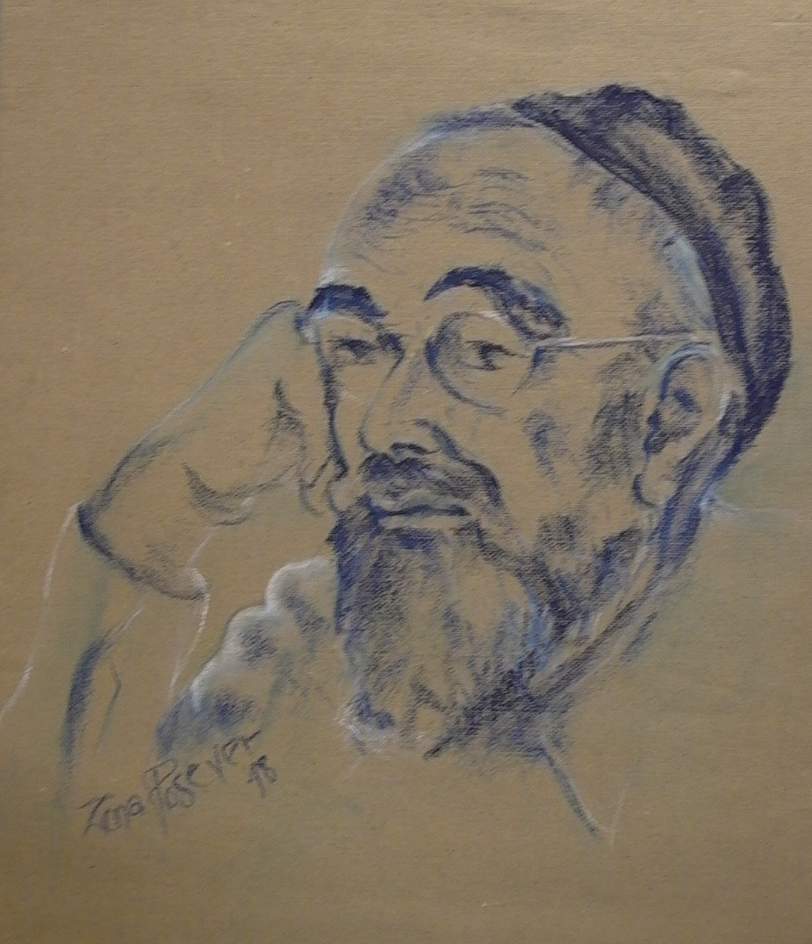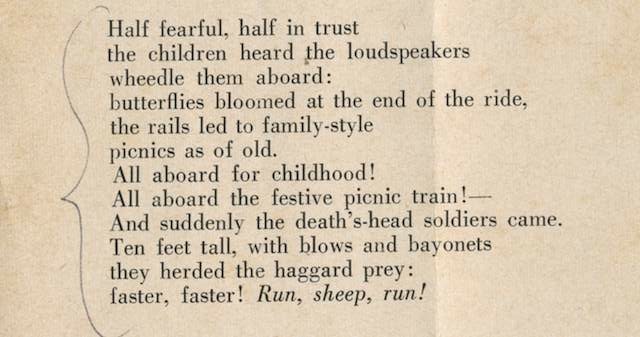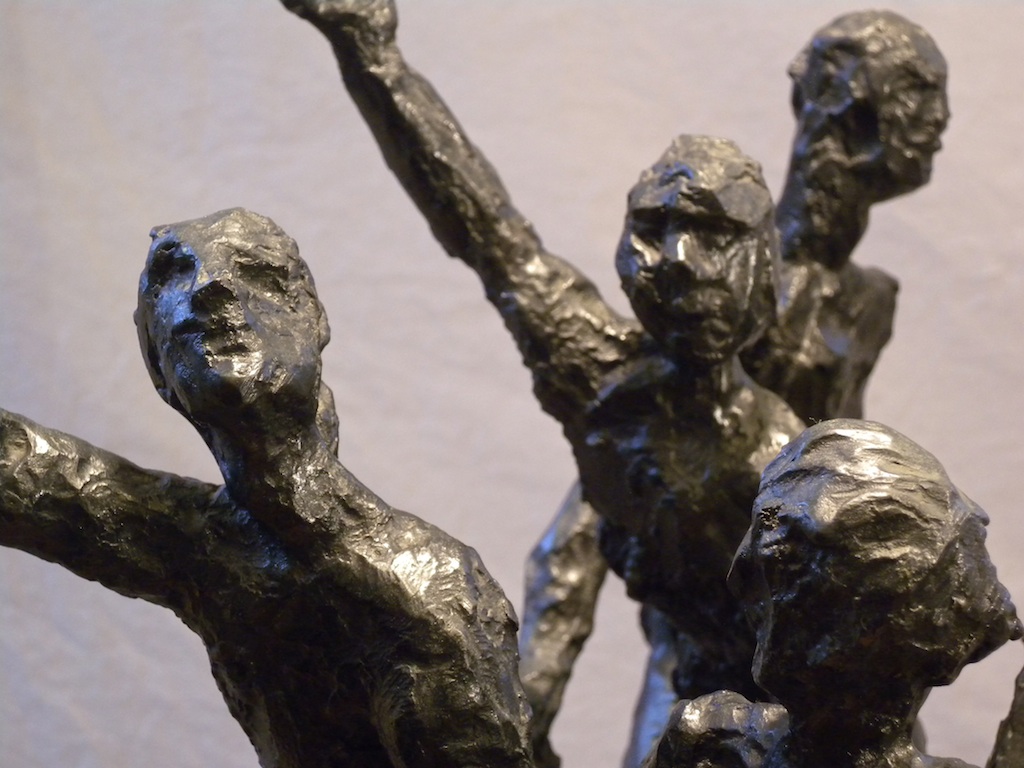Kindertransporte is a maquette Zena intended for a monumental Holocaust memorial. Five abstract figures rise from a rough mound and advance toward an unknown destination.
A 12,000 Mile Journey
Zena’s art would come from her own experiences of persecution, emigration and war. With the pogroms ravaging Jewish villages fresh in their memory, her family left the Russian Empire when she was very young. Her father had refused to fight on behalf of the Czar in World War I.
She crossed Asia while war raged on in Europe, then traveled from China to Japan and across the Pacific Ocean in steerage to Seattle, and farther still by train across the United States to Philadelphia. Impressions of the lengthy voyage lived in her consciousness.
Zena strongly identified with her Jewish heritage and treasured its culture. She spoke Yiddish and learned to read and write it. When the Yiddish Book Center was established in Amherst, Massachusetts, to preserve the legacy of Eastern European Jewry, she was one of the collectors (zamler) who transported books there from Miami Beach.

Williamsburg Rabbi, Pastel Drawing 1948
As it had when she was a child, war impacted Zena’s adult life. Her first husband was killed as an American volunteer in the Spanish Civil War. World War II and the Holocaust were profoundly disturbing. Kindertransporte was her way of giving solid form to words she had read in a poem about the Nazis’ cunning and extreme cruelty.

Cabral Poem [excerpt], Jewish Currents April 1962
Olga Cabral’s The Children was a reaction to the widely reported trial of Adolph Eichmann, named “the desk murderer” by Nazi hunter Simon Wiesenthal. Long after the war ended, Eichmann was captured in Argentina and brought to Jerusalem. One of the horrifying revelations brought to light concerned the deception of 4,000 children from an internment camp outside Paris. Nazi soldiers had tricked the trusting youngsters into thinking that they were being led to a picnic instead of to the gas ovens at Auschwitz.
The ambiguity of the circumstance that Zena gleaned from Cabral’s poem comes through in the flailing arms and racing bodies of her figures. Zena asks us:
Are the children intended simply to be thin or are they malnurished and gaunt?
Are they animated, playfully parading to a picnic, or desperate, being herded to their doom?

Kindertransporte [detail], before 1966, Bronze
Speaking Out
